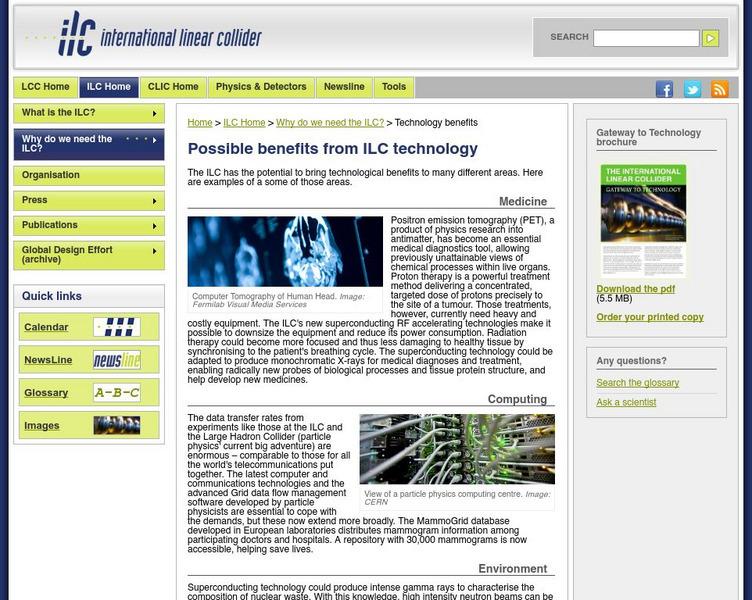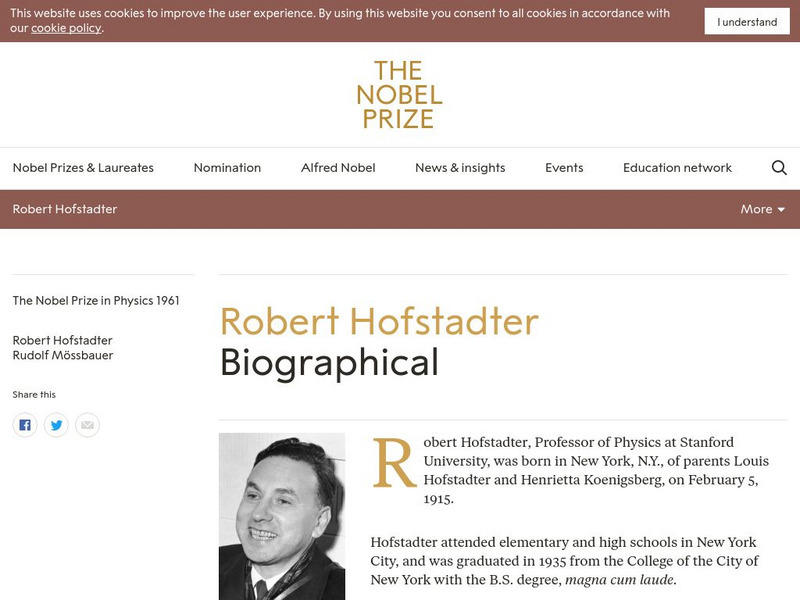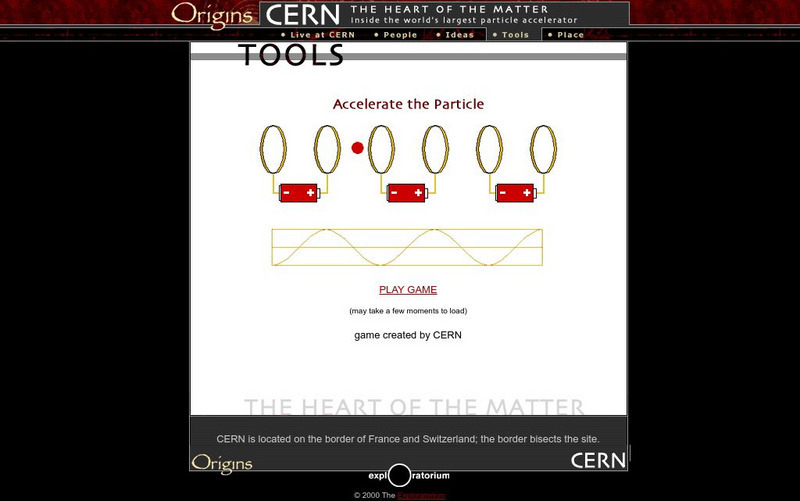Nobel Media AB
The Nobel Prize: The Nobel Prize in Physics 1961 Presentation Speech
The speech given by Prof I. Waller at the presentation of the Nobel Prize to Robert Hofstadter. Details the work both of Hofstadter and of Rudolf Mossbauer, who shared the prize. Elegantly said, with plenty of scientific detail.
Other
International Linear Collider: How Does the Ilc Work? [Pdf]
The proposed International Linear Collider will be thirty-one kilometers long, This poster gives a basic explanation of how it will work.
Symmetry Magazine
Symmetry Magazine: Explain It in 60 Seconds: The International Linear Collider
The International Linear Collider, when built, will be larger than the Large Hadron Collider near Geneva. A short description is given here. "Explain It In 60 Seconds" is an article series that aims to summarize in a few paragraphs the...
Other
Desy: Aachen the First Operational Linac
A chapter of an autobiography of Rolf Wideroe, an important figure in the development of accelerators. This chapter discusses the first linear accelerator.
Other
International Linear Collider: Possible Benefits From Ilc Technology
Research with linear colliders may enormously benefit fields such as medicine, computing and the environment. Examples include medical proton therapy and the potential of being able to render nuclear waste harmless. A wonderful side...
Nobel Media AB
The Nobel Prize: Robert Hofstadter Biographical
Official Nobel Institute biography of Hofstadter. Very little personal information. Lots and lots of science work, description, etc.
Exploratorium
Exploratorium: Cern: Linear Accelerator
From CERN, the European Center for Nuclear Research, this site provides a brief description of the physics underlying how a linear accelerator works.
Exploratorium
Exploratorium: Cern: Accelerate the Particle
Contains a game which illustrates the manner in which changing electromagnetic fields can accelerate charged particles in a linear accelerator.
Stanford University
Stanford University: Accelerators
This site is provided for by the Stanford University. Part of SLACs virtual visitors center outlining the construction and operation of a linear accelerator, including descriptions of each of the major parts. Good physics content for...



![International Linear Collider: How Does the Ilc Work? [Pdf] Handout International Linear Collider: How Does the Ilc Work? [Pdf] Handout](https://d15y2dacu3jp90.cloudfront.net/images/attachment_defaults/resource/large/FPO-knovation.png)





